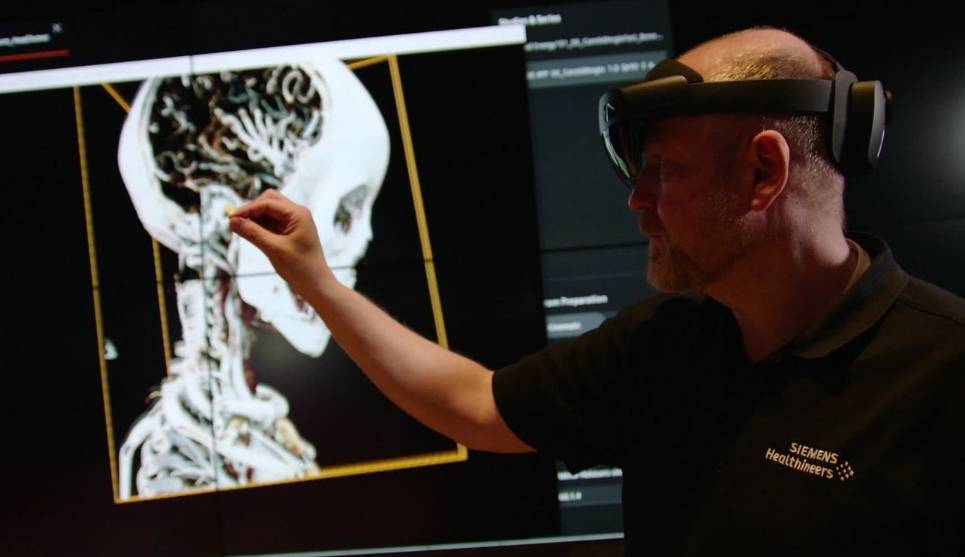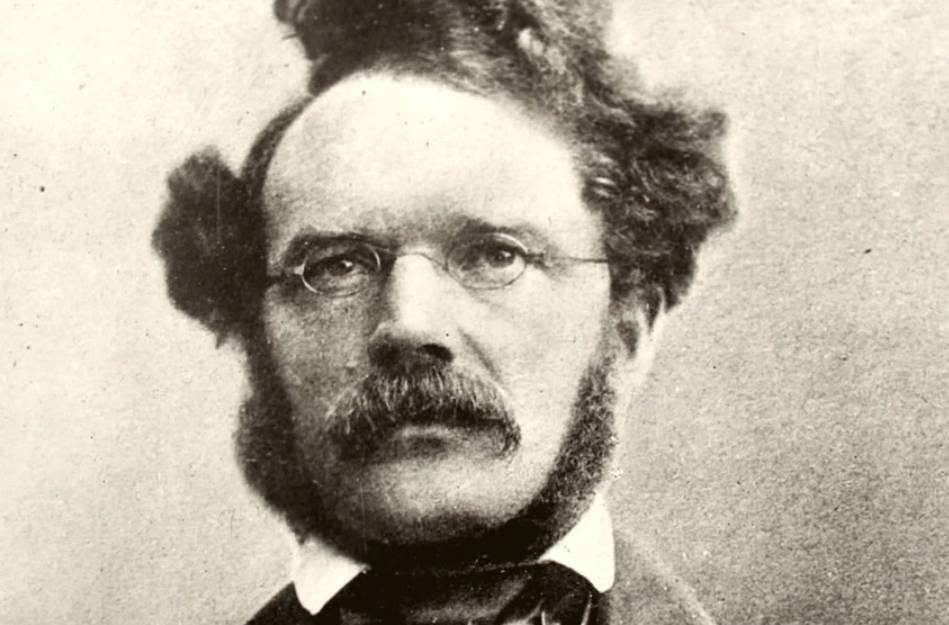Around 300,000 people work for Siemens worldwide, including over 50,000 in Bavaria. Werner von Siemens laid the foundation for this 175 years ago. A look back at the eventful history of the company.
The inventions of Werner von Siemens advanced the technology world. The products from the company’s long history are still part of everyday life for many people today. Siemens can look back on 175 years of company history, during which the company has continually reinvented itself and developed further. But things didn’t always go uphill: wars, corporate crises, a major corruption scandal and repeated corporate restructuring.
Surprises in the historic Siemens depot
More than 15,000 products from the company’s 175-year history are stored in a former factory building in Munich-Neuperlach. Some are still familiar to many: irons, radios, televisions, but also computers or vacuum cleaners and the associated advertising.
Florian Kiuntke directs the Siemens Historical Institute. Some objects there are reminiscent of the history of the electrification of Germany.
“In 1914 only five percent of households in Berlin were electrified. But in 1927 it was already 50 percent,” explains Kiuntke.
The more households had access to electricity, the larger the market for electrical household appliances became. But there are also a few surprises in the historic depot, for example: electric cars.
“Perhaps not everyone knows that. But we were once very far ahead when it came to electromobility. More than 100 years ago,” explains Kiuntke. “In fact, back in 1847 Werner von Siemens dreamed of building an electric cab that wouldn’t leave him standing in the dirt. That was his quote. It took a while, but from 1905 Siemens started producing electric automobiles For a variety of reasons, the production of electric automobiles was discontinued in 1910.”
The problem back then was the batteries. The range was very limited.

The beginnings of Siemens as a backyard workshop
On October 1, 1847, Werner Siemens, who was raised to the nobility in 1888, founded a company in Berlin together with Johann Georg Halske: the Telegraphen-Bau-Anstalt Siemens & Halske. The company was a backyard workshop back then. Werner von Siemens was the inventor, Halske the technician who implemented the ideas. In the early years, everything revolved around communication. And that’s where telegraphy played a crucial role in the middle of the 19th century. The first device that Werner von Siemens invented was a so-called pointer telegraph. In contrast to the products of the competition, the device was able to transmit messages almost error-free. The young company soon received the order to build a telegraph line from Berlin to Frankfurt am Main.
“Within a few months, this line was then built from Berlin to Frankfurt and then, when the Prussian king was elected German Emperor in the Paulskirche, this message was able to be transmitted to Berlin within an hour via this new line. A sensation, of course at that time,” explains Kiuntke.
Together with his brothers, whom he soon brought into the company, Werner von Siemens also worked on a telegraph line across the Atlantic from Europe to America. A huge project that threatened to fail again and again.
“You have to imagine that: He simply chartered a ship, loaded cables on it and then basically drove off,” explains Kiuntke. “What they all didn’t consider was: you have to stow the cables in such a way that they don’t roll back and forth or that they don’t endanger the ship. And then he made all these experiences – together with his brothers – in those first transfers. He learned a lot from the apprenticeship.”
But that is exactly what distinguishes a successful entrepreneur from an unsuccessful one, according to Kiuntke. Others might have given up, but the Siemens brothers went one step further.
“And all this experience flowed into this ship, which then laid Siemens’ first own transatlantic cable from Europe to America.”

From telegraphy to power stations to electric railways
Werner von Siemens did not stay with the telegraph. He discovered the dynamo-electric principle, with which electricity could be generated economically for the first time. The first large generators were built. And the first permanently installed power plant in the world was built in Bavaria. It generated the power to illuminate the Venus Grotto at Linderhof Palace, the favorite palace of King Ludwig II.
With his ideas, Werner von Siemens also changed people’s mobility at the end of the 19th century. He developed an electric train and presented it in 1879 at the Berlin trade exhibition. Visitors could be driven around in circles. Thus the prototype of the electric tram was born. Just a few years later, these new means of transport were rolling in other cities, such as Nuremberg. Nuremberg was also a pioneer in Germany when it came to driverless subways. This modern technology was introduced there in 2008 together with Siemens.
Siemens also built the first Munich subway. However, this did not transport people, but sacks for the mail. From 1910 to the end of the 1980s, letters were transported from the Hopfenpost to the main train station on the underground train – a unique service in Germany at the time. Today, on the other hand, Siemens builds high-speed trains and modern locomotives. The Vectron model series, which drives in more than 20 countries, is created in the Munich-Allach plant.
Siemens received a major order from Egypt: an express train network with an order value of 8.1 billion euros. This is the largest single order in the history of Siemens.
“We’ll build this up within ten, 15 years. Within that time, we’ll bring a country that doesn’t appear on the map to sixth place in the world when it comes to high speeds,” says Roland Busch, CEO of Siemens AG since 2021 is.
Ups and downs in the energy business
Siemens has also been building power plants, generators, turbines and transformers since the 19th century. But all was not well in the energy business. Losses were made primarily in the power plant and wind power sectors. In 2020, the entire energy division was spun off and listed on the stock exchange as Siemens Energy. But the problems didn’t get any less after the conversion. Siemens Energy is still struggling with losses, mainly because of its Spanish wind power subsidiary Gamesa.
Another spin-off of the Siemens group is better off: Siemens Healthineers. The company’s medical division went public in 2018. At the end of 2021, the company amazed the industry with a new computer tomograph: the first quantum-counting CT scanner.
“There are people who compare the whole thing with the transition from the first black-and-white television to a high-definition color television,” says Stefan Ulzheimer from Siemens Healthineers.
Siemens has been in the business of imaging medical procedures for a long time. The first devices came onto the market in 1896, shortly after the discovery of X-rays. From the 1930s, the first mobile X-ray system was manufactured, the so-called Siemens X-ray ball.
“The real highlight was that you could simply plug the X-ray ball into the socket,” explains Katharina Schroll-Bakes from the Siemens Healthineers MedMuseum. “Of course, that was incredibly practical. For example, you could simply drive over to the hospital bed from the patents and take an X-ray. That was a milestone.”
Developments in medical technology
30,000 of these mobile devices were built up until the 1970s and shipped all over the world. Computed tomography was introduced in 1975. At that time, the medical process for representing body structures was a breakthrough in the development of medical technology. And yet there are worlds between then and now.
Siemens Healthineers is a global leader with these new developments. But why did Siemens spin off its medical division at all?
“For a long time, Siemens was notorious as a kind of general store,” says Daniela Bergdolt, who has been dealing with the restructuring of the Siemens group for the German Association for the Protection of Securities for many years. “Virtually everything that had something to do with electricity and that was machines that Siemens could produce and Siemens did produce. And it’s simply true: such a conglomerate always has a discount on the stock market.”
The market price does not represent the value of the individual parts. And that’s why Siemens separated step by step.
“One has also recognized that the signs of the times are no longer that one does everything.”

The dark side of the company’s history: the use of forced labourers
Telecommunications in particular played an important role in the Siemens group for decades. Around 100 years ago, the “Miss from the office” worked with Siemens systems, just like the telephone exchanges of the Bavarian police. These devices are still in the Siemens depot in Munich – from the black Bakelite telephone to the Siemens cell phone. All history now. Just like the field telephone that was built for the Wehrmacht during the Nazi era. From the Second World War, Siemens increasingly used forced laborers for production – more than 80,000. At least 5,000 were prisoners from concentration camps. A monument is dedicated to the forced laborers in Berlin’s Siemensstadt. This dark side of the company’s history is now a topic in the training of young employees.
Rubble, economic miracle and technical innovations
When World War II ended, Germany lay in ruins. Siemens was also hit hard. Three quarters of the substance of the company was lost and the entire foreign market collapsed. Little by little, products were made again, especially lamps and simple things for everyday use. The corporate headquarters migrated from Berlin to Munich. Bavaria became more and more important for Siemens. The years of the economic boom came and with them many new products. The company grew. Not only did the consumer goods sector flourish, numerous orders also came from industry. Siemens products were in demand all over the world in the 1960s and 1970s.
Siemens was also heavily involved in the 1972 Olympic Games. The data center, which was gigantic by the standards of the time, and the floodlight system were made by Siemens, as were large parts of the Munich subway that was completed for the games.
Structural change and compliance crisis
After the turn of the millennium, there was one group restructuring after the other. Managers came and went, jobs were cut and departments closed. Many business areas were abandoned or sold. The semiconductor division went public as “Infineon”, component production was spun off under the name “Epcos”. Even the telecommunications sector fell victim to management cuts.
Even today, employee representatives are critical of what happened back then.
“It was about a structural change, it was about a system change, and in the end the management made decisions on its own, which later turned out to be wrong,” says Siemens general works council member Tobias Bäumler. Structural change is still taking place today.
“From our point of view, it’s important to get in touch with the employees at an early stage, also with us, as their representatives, and then to start a conversation. What kind of changes are pending? And how can we make them clever in the interests of everyone , from business, also from our shareholders, but above all in the interest of the employees.”
But the criticized restructuring was not the only problem. In 2006, a corruption scandal of unprecedented magnitude shook the company. The whole company was in danger.
“The compliance crisis at the end of 2006/2007 was existential for the company,” confirms Florian Kiuntke. “A system had to be created quickly in order to regain the trust of customers and, above all, the authorities.”
Siemens has repositioned itself
After paying billions in fines, replacing large parts of the top management and setting up an anti-corruption system, Siemens managed to reposition itself – with new business focuses. Example: The Amberg site, where electronic controls are manufactured, has changed from the ground up. The plant here is considered one of the most modern factories in the world: Industry 4.0.
“We do it with automation, digitization. You can increase a lot of efficiency there,” says Siemens CEO Busch. “By the way, efficiency is a huge lever. One kilowatt hour not used means three fewer fed in at the front. So that’s what we’re working on. We electrify all processes that we can electrify. Why is that important? Everything you electrify, you can do with photovoltaics or with operate essentially renewable.”
What would Werner von Siemens say?
According to Daniela Bergdolt from the German Protection Association for Securities Ownership, Siemens has set the course in recent years for the company to continue to be on the market in the future.
“We are now concentrating on digitization. And that could really be the area that Siemens will carry for the next few decades.”
Would the company founder Werner von Siemens agree with the decisions of the past decades?
“He wanted to create something that would last, based on great technology. And that’s the way it is,” says his great-great-granddaughter Nathalie von Siemens. “I could imagine that he is satisfied when he looks at what all the successors have made of it.”

